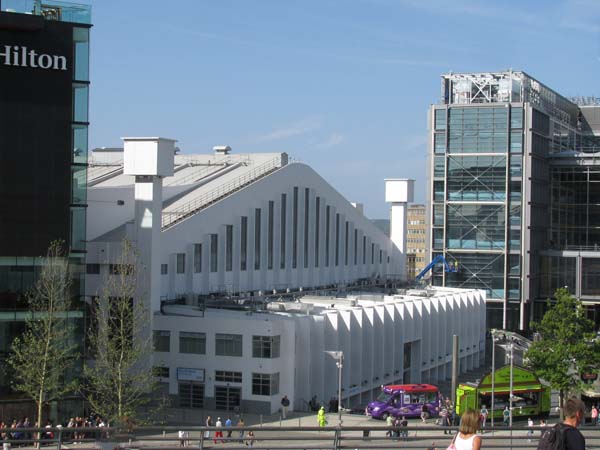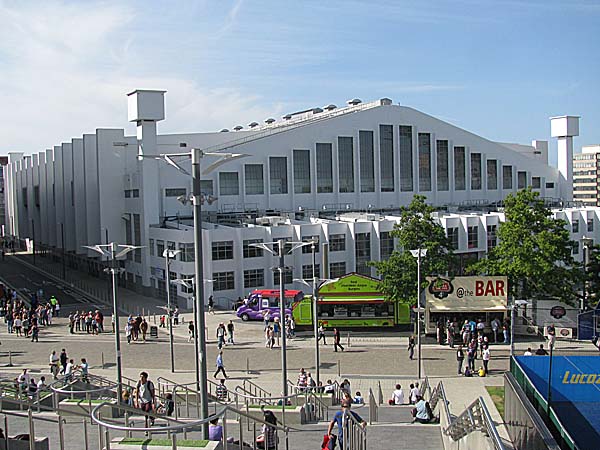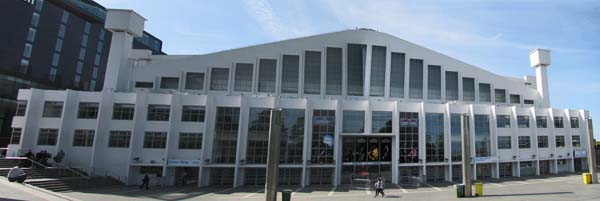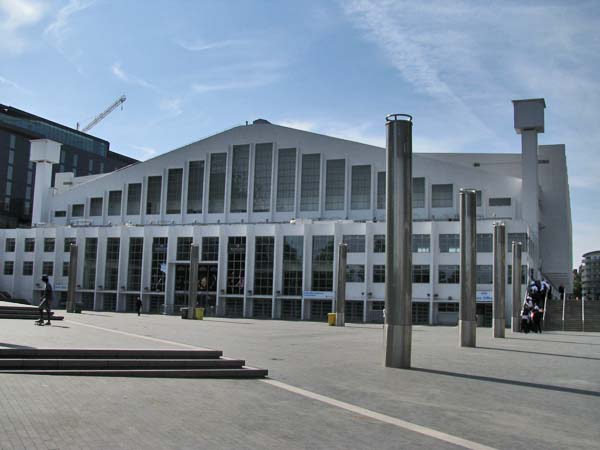The Wembley Arena
started life as the Empire Pool building on
the site of an ornamental lake that was a
feature of the British Empire Exhibition of
1924. It was located across from the
entrance to the original Wembley Stadium, a
building for which Owen Williams was the
engineer. As its name implies, the
Empire Pool was home to an Olympic sized
swimming pool that was used in 1934 for the
Empire Games, the predecessor of the
Commonwealth Games. The "Engineering
Timelines" website says that,
"At the centre of the building
was the pool, 60.1m long by 18.3m wide.
The brief called for a flexible building
that could be used for both major swimming
events ... as well as other uses such as
ice skating, tournaments and music events
... ."
The building was constructed entirely of
concrete and it featured a single roof span
of 72 meters that covered the pool and
seating on either side for 4,000
spectators.
"Engineering Times" explain that,
"This is achieved in reinforced
in situ concrete using three-pin portal
frames in structural bays of 6.7m.
Internally, the tapering portal frames are
expressed as shallow ribs. The main part
of their bulk is expressed on the outside
of the building, a technique that allows
the structure to appear from the inside to
be quite slender, especially at the top of
the roof. Rooflights between the frames
over the pool area provided good
daylighting ... The building's
defining feature are the vertical
rectangular concrete fins on the long
elevations. The weight of these fins holds
the portal frames in place,
counterbalancing them."
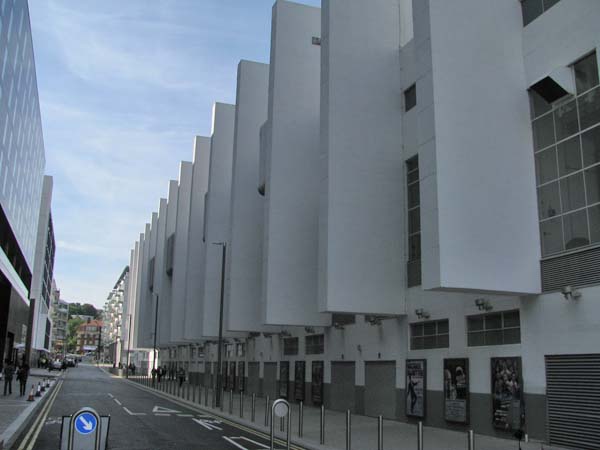
There
are slender towers at the four corners
of the building on top of which are
incongruous water tanks.

The
Empire Pool became the Wembley Arena
in 1978. It is now a major
venue for music and sporting events
with seating for 12,000.
